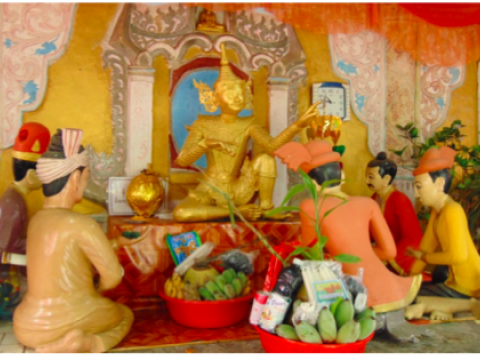The History of Tea Leaf
Image depicts a statue erected on Mt. Loi Saing (Paddamyar Taung in Burmese), near Taung Pė Village, situated within Namsam Township, northern Shan State. The statue goes that when the Burmese king Alaungsithu travelled across his new kingdom around the 5th -6th century, he found Palaung people at Loi San Mountain in Southern Shan State. When he found them to be poor and struggling, he gave them laphet seeds believing it would help them find money for their family. The Palaung farmer who first received the seed took it with a single outstretched hand. Lat ta phat, which translates from Burmese to mean “with one hand”, has since evolved to la phet as the most common word in Myanmar to refer to tea. At the top of the Loi San Mountain in Namsan Township, a Palaung-dominated part of Northern Shan State, there is now a statue which has become a symbol of the seed and the foundation of tea culture. In the centuries that followed, the mythology notes that tea came to be grown in large quantities as an essential livelihood resource of Paluang farmers.
According to locals, Palaung tea traders placed Kadaw-pwé (an offering bowl with an assortment of one coconut, several hands of bananas, candles, tea leaves, and incense sticks) beneath the statue in hopes of receiving blessings for better tea sales.
Myanmar (Burma)
